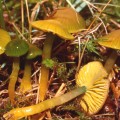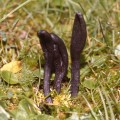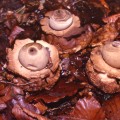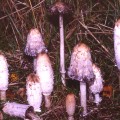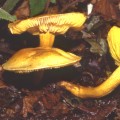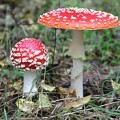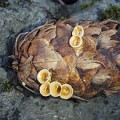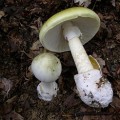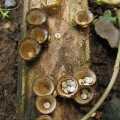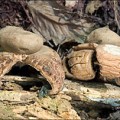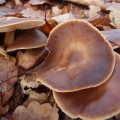Despite a very wet start, the foray at RSPB Sandy was as always very well attended, and very successful with a lot of enthusiastic adults and around a dozen young naturalists who kept leader Alan Outen very busy identifying what they had found. Somehow Alan managed to find time to provide some related facts about the species and even some anecdotes.
The list for this year’s foray currently stands at 142 species but Alan expects this could increase to 180 species once he has consolidated lists from other experts on the foray. Last year the total found was 132 species, so this year has beaten that number and could possibly beat the previous totals of 183 on 4 Nov 2007 and 178 on 08 Nov 2009.
There were some good finds but inevitably the more unusual things are the least likely to have English names. There were a lot of Bonnet caps (Mycena spp.) and Inkcaps (Coprinus sensu lato) which are opportunistic and among the first things to start appearing after rain. There were however also several bright Waxcap species as well as Fairy clubs and Earth-tongues which are good indicators of relatively unimproved grassland. There were also more Brittle-gills (Russula spp), Milkcaps (Lactarius spp) and Boletes than on any of the other forays in the area this year. These are normally among the first things to start appearing in the Autumn but this year have been very scarce. The classic Fly Agaric (Red with white spots) was also common.
Alan didn’t take any photos on the day, he’d decided to leave his camera at home to keep it dry, so here are some from his archives.
- Parrot Waxcap = Hygrocybe psittacina
- An earth-tongue = Geoglossum cookeianum
- Common Earthstar = Geastrum triplex
- Lawyers Wig or Shaggy Inkcap = Coprinus comatus
- Tricholoma sulphureum – a species associated with Oak which smells strongly of gas tar
- Fly Agaric = Amanita muscaria

